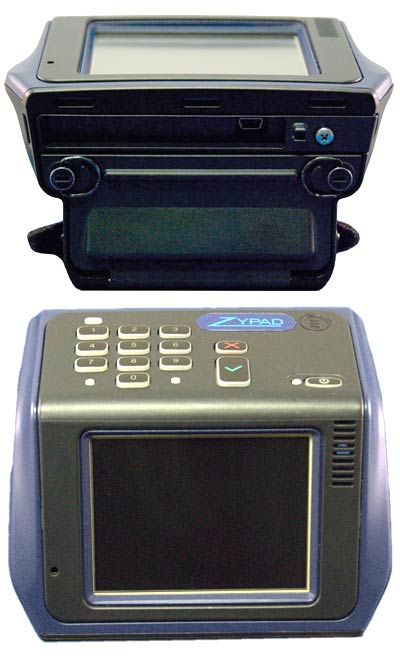One problem with handheld computers is that they are, well, handheld. Which means you need at least one hand to hold them. So why not use a wearable computer instead? Eurotech and its Parvus subsidiary have been pursuing that concept with their Zypad line of wearables for several years now, and on March 21, 2011, Eurotech launched a new model, the wrist-worn Zypad WL1500.

The new Zypad WR1500 joins earlier similar models from Eurotech, or to be more precise, from Parvus. However, while the earlier models (the Zypad WL1000, WL1100 and WR1100) were listed under the Parvus name, the new WR1500 now goes under the Eurotech corporate name.
How does WL1500 compare with the WL1100 and WR1100? First, the "R" designation stands for "rugged," but whereas the 1100 model came both rugged and non-rugged, for now the 1500 line only includes the civilian non-rugged version. Second, while one might assume that the Zypad WL1500 is the successor to the Zypad WL1100, that may not necessarily be so. They are actually quite different.
For example, whereas the WR1100 ran Linux and the WL1100 Linux or Windows CE, the WL1500 uses Windows CE 6.0 exclusively. On the performance side, the new model has an edge with its Marvell PXA320 processor compared to the 416MHz PXA270 that powered the older model. However, while display size remains the same at 3.5 inches diagonally, the older rugged WR1100 model had full 640 x 480 pixel VGA resolution whereas the new WL1500 must do with the lower res QVGA 320 x 240 pixel format of the WL1100.
And there are more differences yet. The older 1100 series still very much showed its origin as wristwatch-style wearable computers, with the rugged version having the kind of buttons you might find on a digital watch. The new 1500 series has a standard numeric keypad instead, replacing sort of a PDA controls layout on the earlier WL1100. That, and the fact that the new unit can be ordered with a 1D/2D barcode scanner indicates that Eurotech may have different applications in mind (the external ring-scanner used with previous models remains available).
In fact, Eurotech is targetting the new model at "users who need instant access to information while still maintaining mobility, such as emergency search and rescue, medical, homeland security, law enforcement, logistics, maintenance and transportation professionals."
There is a microSD card slot for expansion and the battery is said to last up to eight hours. The device has a speaker, a microphone with noise cancellation, an audio port, and both USB host and client ports. There is also an integrated accelerometer but not the biometric fingerprint reader found in the WR1100.
For communication there's 802.11b/g WiFi and Bluetooth, as well as cellular including 3G, both of the CDMA and GPRS variety with UMTS, HSDPA radio module support. Built-in GPS tracking capability with an integrated antenna further expands communications capabilities.
Whether or not there will also be a rugged version of the 1500 series has not yet been announced. Given Eurotech's primary focus on industrial and vertical markets whereas Parvus has always concentrated on rugged military/COTS subsystems, it's conceivable that we'll see a rugged version under the Parvus name while the civilian Zypads move over to Eurotech proper.



